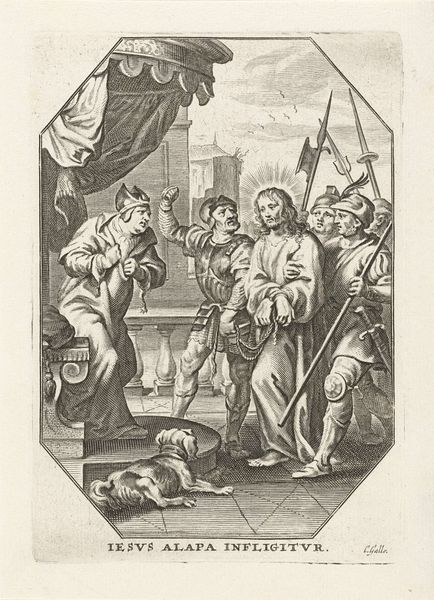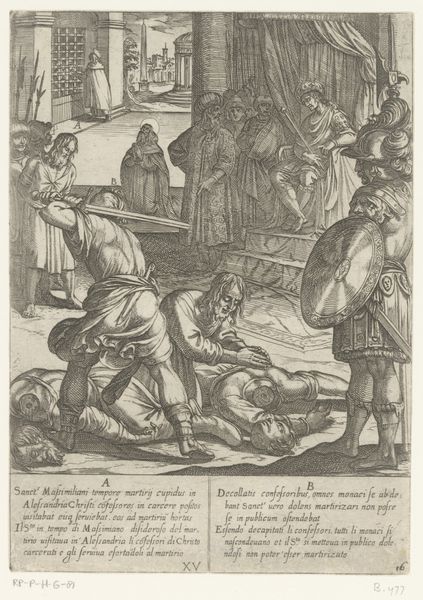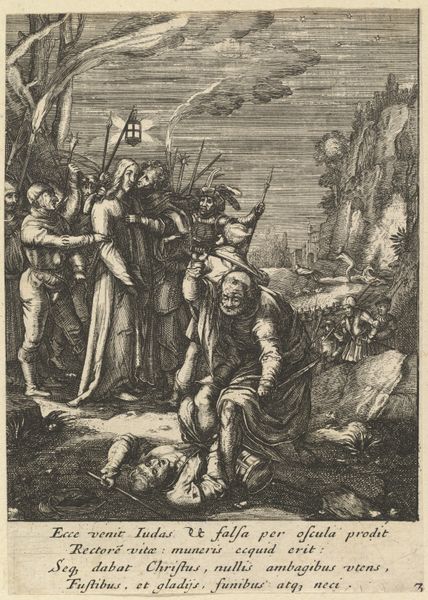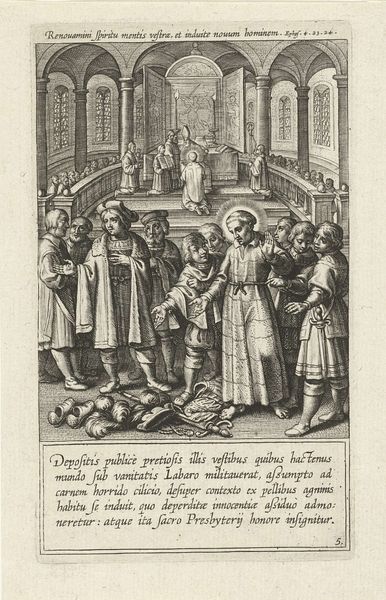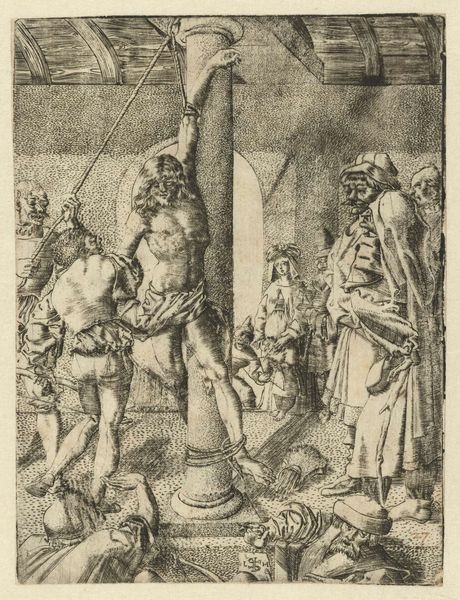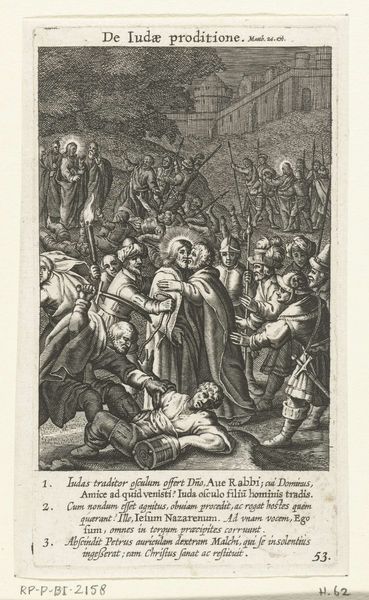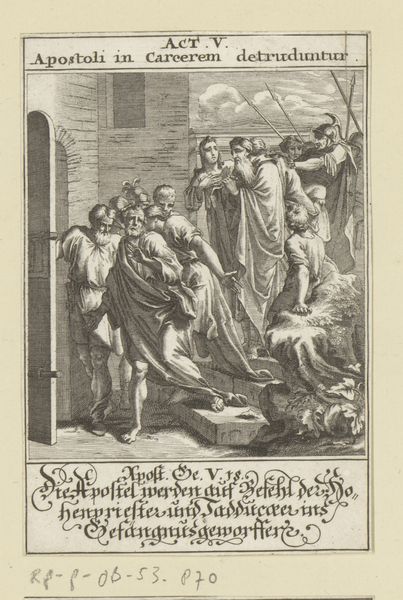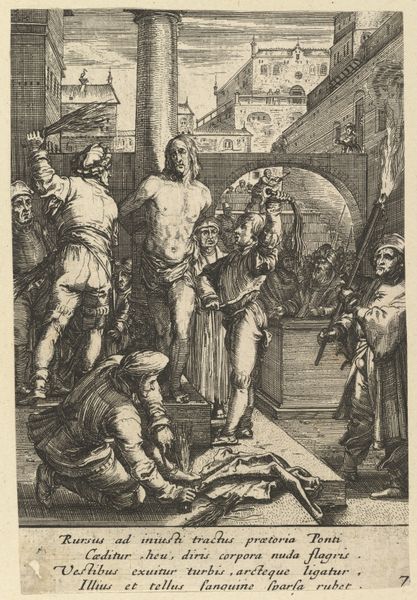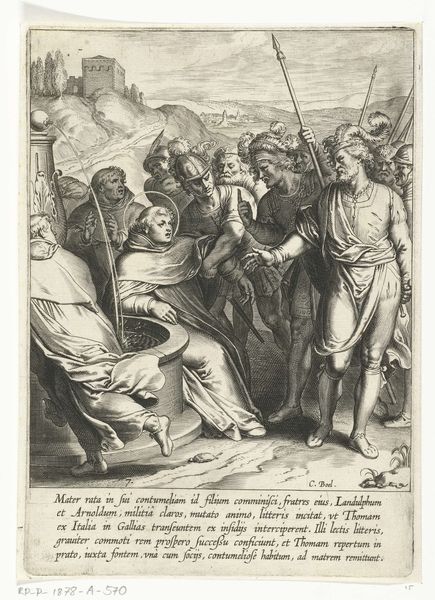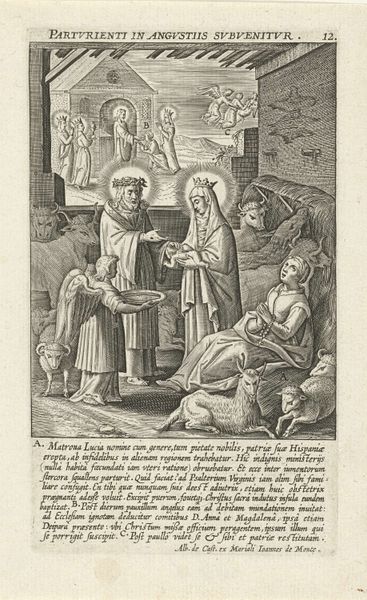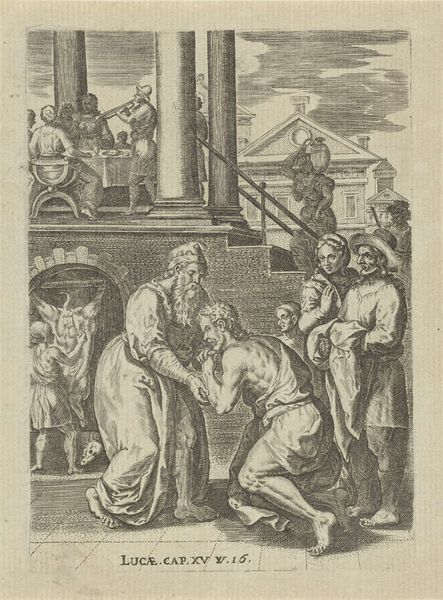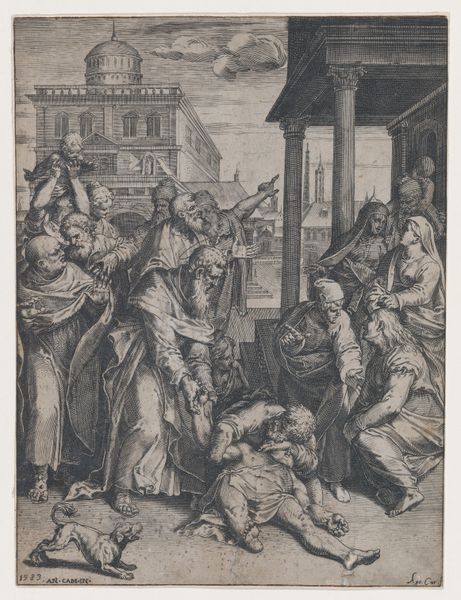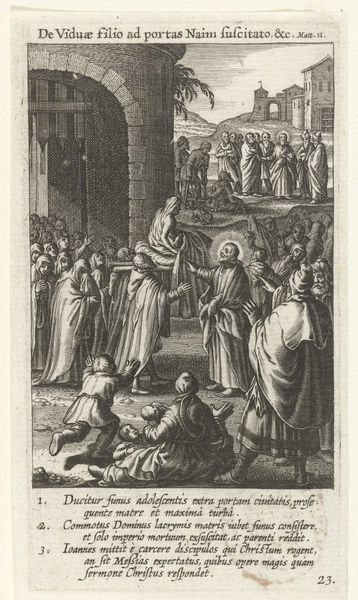
print, engraving
#
narrative-art
#
baroque
# print
#
figuration
#
history-painting
#
engraving
Dimensions: height 143 mm, width 87 mm
Copyright: Rijks Museum: Open Domain
Curator: This engraving, “Mannen aanschouwen ter dood gebrachte figuren,” or “Men Observing Figures Put to Death," made after 1653, is held in the Rijksmuseum. It is from an anonymous hand, as far as we know. Editor: Immediately striking. It is a complexly structured scene—claustrophobic even. The visual layering, the sharp lines—creates an unsettling sense of drama. Curator: Indeed. This piece belongs to a tradition of history painting rendered as print. Considering the historical context and production processes, we need to acknowledge print’s broader social function here as document and propaganda. The detailed rendering of garments and architectural settings point to certain economic and social structures, reflecting, and even shaping, the public opinion of the time. Editor: The composition reinforces the theme. Look how the foreground is dominated by the prone bodies. Above, two men gesture outwards to crowds, one seemingly triumphant over a pile of cannonballs, while in the base of the frame, the populace averts its gaze. It certainly creates a very dynamic vertical reading, almost theatrical in presentation. Curator: Consider the medium itself—engraving—and its implications. The work involved manual skill and potentially division of labor. So, one wonders about workshop practices and access to such imagery, as the cost would have dictated who consumes and interprets the scene depicted. The print suggests this theatre of power—but whose power exactly? Editor: The use of line is certainly impressive. Notice how it modulates from bold and decisive to a finer, almost delicate touch when delineating facial features or the folds of clothing. It creates considerable texture and depth. There’s real sophistication in how light and shadow are being evoked. Curator: I'd like to emphasize that the meaning isn't just "in" the image but also comes from its distribution and usage, right? How such visual representation could fuel partisan discourse among different social classes is particularly critical to me. Editor: Ultimately, regardless of who created it or how it circulated, it functions through form: by organizing chaotic human drama within the sharply defined logic of visual space, producing meaning for the viewer. Curator: A perspective to which I now lend more weight, understanding it both as image, and artifact, with implications for how the visual economy operated back then.
Comments
No comments
Be the first to comment and join the conversation on the ultimate creative platform.
